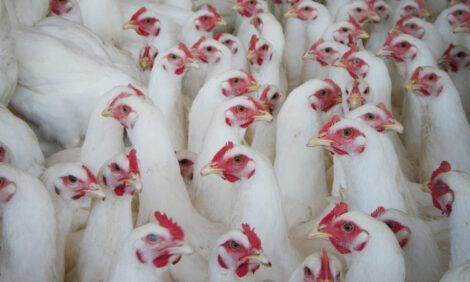



Threonine Requirement of Broiler Chickens during Subclinical Intestinal Clostridium Infection
A higher ratio of threonine to lysine improved the performance of broilers infected with Clostridium perfringens, the pathogen associated with necrotic enteritis, according to researchers based in the Netherlands and France. However, intestinal damage was not affected by the amino acid ratio.In a paper published in the journal, Poultry Science, L. Star of Schothorst Feed Research in the Netherlands and co-authors there and with Orffa Additives B.V. and Ajinomoto Eurolysine s.a.s. write that the aim of their study was to determine the threonine requirement of broilers during a subclinical Clostridium infection.
Three experiments were performed: experiments 1 and 2 to investigate the dose-response of threonine supplementation during infection and experiment 3 to validate the threonine requirement during infection. In each experiment, day–old Ross 308 male broilers were used. An infection model was used with inoculation of Eimeria maxima and Clostridium perfringens on days 9 and 14 of age, respectively. Control birds were inoculated with saline and liver broth on days 9 and 14 of age, respectively.
From day 9 of age, infected birds were fed diets differing in the standardised digestible threonine-to-lysine ratio (realized ratios experiment 1: 0.55, 0.58, 0.63, 0.69, and 0.72; realized ratios experiment 2: 0.64, 0.65, 0.67, 0.69, and 0.72; and realized ratios experiment 3: 0.63 and 0.67). Uninfected birds were fed diets with a realized Thr:Lys ratio of 0.63 in experiments 1 and 2 and of 0.63 or 0.67 in experiment 3.
The incidence of lesions, lesion severity and mortality rate of infected birds was not affected by the Thr:Lys ratio.
Experiments 1 and 2 showed that the decrease in bodyweight gain and feed intake was less severe in infected birds fed a diet with a Thr:Lys ratio of 0.69 and 0.67, respectively, but the differences were not significant.
Validation of the Thr:Lys ratio in experiment 3 showed that the bodyweight gain and feed intake were higher for infected birds with a Thr:Lys ratio of 0.67 compared with infected birds with a Thr:Lys ratio of 0.63. This resulted in an increased bodyweight gain and feed intake of 129 and 148g, respectively, with a higher Thr:Lys ratio over a production period of 37 days.
According to Star and co-authors, the results indicates that a higher Thr:Lys ratio in infected birds improved production performance during infection with C. perfringens, although intestinal damage (incidence and lesion severity) was not affected.
Reference
Star L., M. Rovers, E. Corrent and J.D. van der Klis. 2012. Threonine requirement of broiler chickens during subclinical intestinal Clostridium infection. Poult. Sci. 91(3): 643-652. doi: 10.3382/ps.2011-01923
Further Reading
| - | You can view the full report (fee payable) by clicking here. |
Further Reading
|
| - | Find out more information on necrotic enteritis by clicking here. |
April 2012











